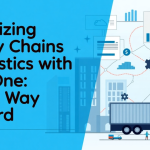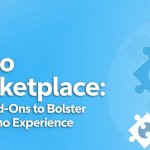
How to Set Up Custom CRM Workflows for Manufacturing in Zoho
First Paragraph Sharing data freely among varied software applications is essential in the modern business world if there is to be high productivity and efficiency. With the Zoho CRM API, businesses can marry the third-party apps with the CRM software for automatic workflow, better customer intelligence, and real-time data synchronization.
We will provide a step-by-step guide on getting a seamless and automated data migration between systems by means of APIs, including how Zoho CRM can be integrated with third-party software.
Zoho CRM APIs Understanding Developers can use RESTful APIs from Zoho CRM to programmatically access CRM data.
Businesses may be started:
- Get, modify, and delete Zoho CRM data.
- Synchronize third-party programs with contacts, leads, and transactions.
- Calling events by calls will help to simplify company operations and methods.
- Also use third-party applications such as marketing automation tools, accounting software, and e-commerce apps.
First: Getting API Access Please follow the below steps to deploy the Zoho CRM API:
- Produce API Keys:
- Sign into Zoho Developer Console.
- Register as new customer and obtain Client ID Customer Secret.
- Get OAuth2 Token:
- With ID and Client Secret, generate an OAuth 2 access token.
- Distribute this token among all API requests.
- Enable API Scope:
- The range of your integration requirements (e.g., read, write, alter CRM data) is stated.
Second Stage: Generation of API Calls You have logged in so you can now request Zoho CRM data via API calls.
Example: Leads Collection via Zoho CRM
GET https://www.zohoapis.com/crm/v2/leads
Authorization: Bearer YOUR_ACCESS_TOK
Content-Type: text/json
References:
{
“tdata”: [
{
“id”: “123456789”,
“Company”: “ABC Corp”,
“Email”: “john.doe@example.com“,
“Phone”: “1234567890”
}
]
}
Retrieving leads from Zoho CRM calls this API and syncs them with other applications as well.
Step Three: Integration of Third-Party Apps
- Zoho CRM and E-commerce Shops (Shopify, WooCommerce)
- Coordinate consumer purchases, item stock, and payments across web store and CRM.
- Sample API Endpoints:
- Get Orders: GET /Orders
- Update Inventory: POST /Products
- Zoho Accounting Software and CRM (QuickBooks, Zoho Books)
- Automated invoicing and monitoring payment status are vital components of Zoho CRM.
- Sample API Endpoints:
- Construct Invoice: POST /Invoices
- Check Payment Status: GET /Payments
- Marketing Tools (HubSpot, Mailchimp) and Zoho CRM
- Synchronize lead data, email blast, and customer activity.
- Sample API Endpoints:
- Sync Contacts: POST /Contacts
- Track Email Opens: GET /Campaigns
Automating Data Flow via Webhooks (Step Four) Webhooks enable Zoho CRM to alert outside programs every time something happens—say, a fresh lead is born.
Configuring Webhooks in Zoho CRM:
- Navigate to Settings > Developer Space > Webhooks.
- Pick the module—contacts, deals, leads.
- Give the URL of the third-party program to alert via the webhook.
- Define triggers (e.g., inform Mailchimp every time a fresh contact is generated).
Sample Webhook Payload:
{
“event”: “New Lead Created”,
“data”: {
“identifier”: “123456789”,
“Company”: “XYZ Inc.”,
“Email”: “info@xyz.com“
}
}
Before broadcast with your integration, test and deploy to see if:
- API calls are accurately authenticated.
- Zoho CRM and third-party apps have the same data formats.
- We have implemented error management tools including refresher tokens and API rate limit controls.
Try Postman or Zoho API Sandbox to test API calls. In essence, linking Zoho CRM to other applications using APIs raises efficiency, simplifies work, and permits live data synchronization. Businesses can create a seamless data flow using Zoho CRM API features, Webhooks, and OAuth authentication between their CRM and other applications. Start looking for Zoho API today if you want a dependable Zoho CRM integration solution.




